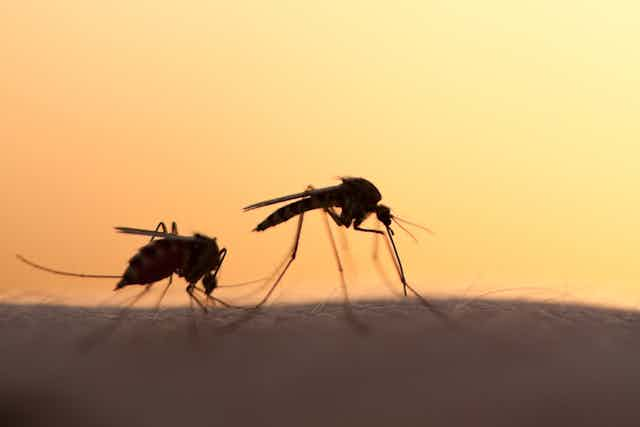Virologists have been expressing concern about Zika virus for a couple of years now, but it’s only with its arrival in Puerto Rico during the holiday season that it has really started to make the news.
Some of the headlines have focused on the apparent association between Zika infection in pregnant women and the birth of babies with small brains – a condition known as microcephaly. This association is still largely circumstantial, but if true would be extremely alarming. Zika has also apparently changed its behaviour in other ways, spreading faster, spreading sexually, and also lumbering some survivors with the nasty post-viral Guillain-Barré Syndrome. Although GBS can be fatal, the worst GBS manifestation in recovered Zika patients so far has been a partial temporary paralysis.
Based on previous experience, Zika would have seemed an unlikely candidate for the next big global virus scare. Discovered in macaque monkeys in 1947 in Uganda’s Zika forest, it was nearly a decade later that the first human case was detected. Spread by mosquito bite, Zika was mild compared to other members of the flavivirus family, which includes the feared yellow fever, dengue fever and West Nile virus. Nobody was known to have died as a result of Zika infection, and clinical interest was so low that scarcely more than a dozen confirmed cases were described in the medical literature. A brief high fever, a rash, some joint pain and in the worst cases a bit of headache and nausea – Zika was barely worse than a dose of flu.
Turning point
The warning bells began to sound quietly in 2007. Although, prior to that date, public health workers running routine diagnostics had detected antibodies against Zika virus in a wide variety of places in tropical Africa and South-East Asia, which indicated that quite a lot of people had encountered Zika at some point in their lives. But there was no suggestion that the virus was particularly common or going anywhere fast. In 2007 Zika broke out of its established range, appearing first in the isolated Micronesian island of Yap in the Pacific Ocean some 1,800km east of the Philippines. The Yap outbreak had 180 cases and was the first time Zika cases had been seen in any kind of cluster.
Things went quiet again until 2013. During the interval, a study of the evolution of Zika virus concluded that it had probably emerged in east Africa in the early 20th century and spread to South-East Asia around the time of World War II. The Micronesian strain was clearly of Asian origin.
Then, in 2013, a massive outbreak occurred in Polynesia, in the eastern end of the Pacific Ocean. With the arrival of the Zika virus on Easter Island early in 2014 it was only a matter of time before it reached South America. The exact point of entry is unknown – an international canoe racing tournament or the 2014 World Cup have been mooted – but once Zika had gained a foothold in Brazil it exploded in a way that made even the Pacific Island outbreaks look small. Potentially upwards of a million cases have arisen, including the first fatalities and the apparent association between Zika and microcephaly. The alarm bells were now at full volume.
Heading for the US
Whereas it had taken Zika a century to cover the ground from Central Africa to the Far East and then another eight years to cross the Pacific, it now turned north like a virus in a hurry. By the end of 2015, Zika had reached Mexico and the Caribbean. It can only be a matter of time before the first case is reported north of the Rio Grande.

Zika’s frenetic progress is now becoming mirrored by increasingly intensive research efforts. There are several salient, but as yet unanswered, questions. Is the association with microcephaly real, or is the Brazilian microcephaly spike just a parallel epidemic caused by something else? Why was microcephaly not reported in the Pacific island outbreaks? If the microcephaly association is proved, what does this mean for affected communities? Can Zika establish a permanent presence in the US, like its relative West Nile virus, or alternatively will Zika stop at the Mexican border like its cousin, dengue? What does the similar northward expansion in the range of Aedes mosquitoes mean for both Zika and dengue?
Events are moving on an almost daily basis. 2016 may turn out to be the year of Zika.
An earlier version of this article said: “…and also lumbering some survivors with the nasty post-viral Guillain-Barré Syndrome which at its worst can lead to partial temporary paralysis.”
This has been corrected to:
“…and also lumbering some survivors with the nasty post-viral Guillain-Barré Syndrome (GBS). Although GBS can be fatal, the worst GBS manifestation in recovered Zika patients so far has been a partial temporary paralysis.”

